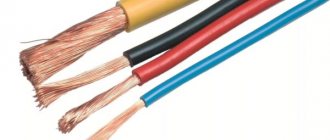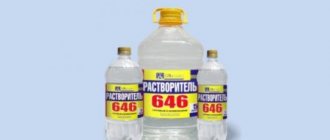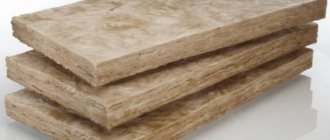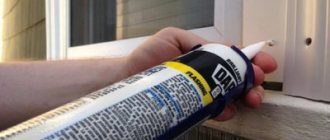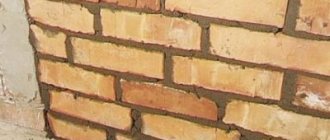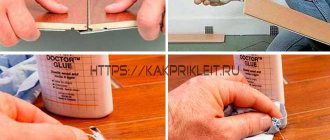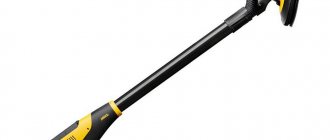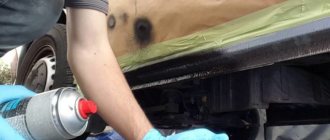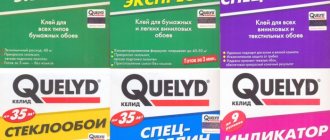Threaded connections used in plumbing, heating and gas supply systems must be completely sealed. It is almost impossible to achieve this only due to the quality of the thread itself, without the use of additional materials. There are several methods of sealing, but recently anaerobic sealant for threaded connections has gained enormous popularity among craftsmen. Why?
Naturally, the main task of such seals is to completely seal the joints. The material used must completely prevent the leakage of water or gas through the threaded gap. But a high-quality seal must have other important properties:
- It should not contribute to corrosion of the elements being connected. On the contrary, the material applied to seal threaded connections is designed to protect these vulnerable areas from damage caused by exposure to water or aggressive substances.
- All sealing materials, including sealants, must have good adhesive properties to prevent them from being squeezed out of joints under pressure of water or gas.
- It must be resistant to temperature changes and withstand vibration vibrations.
- The materials used to seal the pipes should not significantly impede the assembly or disassembly of the connection. It is very convenient if after dismantling the sealant can be easily removed and reapplied.
Another important feature that you should pay attention to when choosing a sealant or sealant for threads is ease of use. Very often such connections are located in hard-to-reach places where any manipulation is difficult. In such cases, sealants have a clear advantage, since they do not require such careful and thorough application as sealing tapes or linen.
Main types of pipe seals
From the entire arsenal, the following can be distinguished:
- Linen
- Adhesive sealant
- Silicone
- A thread
- FUM tape
The question “which pipe sealant is better and which is worse?” - incorrect. In order to understand this question, it needs to be posed somewhat differently: “What type of sealing of threaded connections should be used in specific conditions?”
Let's start with what sealant should not be used for threaded connections:
- Silicone (good for flange connections);
- Ship's red lead;
- Whitewash, various types of paints.
So, there are 4 types of material left:
- Linen;
- Thread;
- Adhesive sealant;
- FUM tape.
Why do you need to seal a threaded connection?
The presence of a thread in itself is a guarantee of a strong joining of two parts. But in some cases, without additional sealing, the assembly will not serve reliably. An example is plumbing equipment, sewer pipes, radiator joints: without a high-quality seal, the joints can leak. The reason is regularly occurring temperature changes, at which metal and metal-plastic pipes expand and contract.
Similar phenomena occur with constant vibration experienced by water pipes. In addition, with prolonged contact with water, even the highest quality metal begins to rust. As a result, the connection weakens, the thread becomes loose, and leaks occur. You can combat such problems by tightly tightening the bolts and washers, as well as by applying a special polymer composition.
Sealant for threaded connections will minimize the risk of leakage and reduce the negative impact of vibration, contact with moisture, and temperature changes. Anaerobic sealant is best suited for this purpose, although some plumbers still use FUM tapes or other types of sealants.
Seal flax
Flax for winding threaded connections
You can use flax as a winding for pipes on all metal parts: brass, cast iron, steel. With limitations, flax can be used where metal threads are soldered into plastic threads. A bad option would be to use linen on completely plastic parts. When sealing threaded connections where the sealant is flax, a large tightening torque is required. This moment can sometimes exceed the capabilities of plastic parts, which is why it is possible to break the thread itself.
Advantages and disadvantages
High-quality sealant for threaded connections has a lot of advantages, which is why its popularity is very high.
The advantages of such compositions:
- ease of use - you can work with the lock even without any skills, the process will take less than a minute,
- high polymerization speed - the unit can be used in just a few hours,
- economical - the consumption of sealant for fixing threads is minimal,
- efficiency - the connection will be 100% tight even when the pressure in the system increases,
- additional protection of products from rust - this is important for metal parts,
- long service life - many products last 5 years or more (in extreme conditions - up to a year),
- the ability to use in gaps of any thickness - from fractions of a millimeter or more,
- resistance to mechanical stress and vibration, chemical agents, insolubility in water,
- suitability for a variety of materials, the ability to connect products of dissimilar structures.
A good sealant has few disadvantages. In fact, they appear only when it is necessary to dismantle the unit, which will require heating with a hair dryer or other professional tools. In addition, FUM tape may cost less than anaerobic sealant, but its quality seriously exceeds all known analogues.
Plumbing thread
Sealing threads with plumbing thread
Plumbing thread is an excellent winding material for pipes with one drawback: its high price. It cannot be torn by hand and is suitable for sealing all threaded joints (even those that have a torn surface from a bad thread cutting tool). As for plastic parts, the tightening torque required when using threads is not the same as when using flax. Plumbing thread can be used for all parts.
Popular manufacturers
Among the most famous brands of anaerobic and other thread sealants are the following:
- Loctite. It occupies a leading position in the market of anaerobic compounds, producing liquid sealants, pastes, medium-flowing agents, as well as sealing threads. All fasteners have a long service life and high strength.
- "Anaterm." This brand of sealants is widely used for connecting welds, steam pipelines, and sealing any cracks or defects.
- "SantechMaster". Russian brand of sealants, under which products are produced for sealing threaded and flange joints. Sealants do not deteriorate from the action of gasoline, oils, alcohols, and are suitable for extreme operating conditions. They have low consumption and do not emit harmful substances.
Sealants are universal and the most convenient means when working with threaded connections. They allow you to easily seal the units, which seriously increases their strength and service life.
Anaerobic sealant
Anaerobic sealant
Anaerobic sealant is certainly suitable for sealing all plastic threaded connections, for brass, for cast iron, factory-made, but there is one peculiarity on steel parts.
When threads are made in a steel part, various types of lubricants are used that get onto the threads. When applying glue, once it hits a greasy area, it lingers there. This may not be noticed. Once the coupling begins to be turned, a channel may form through which the liquid will then flow out.
It is not always possible on site to remove grease from the surface of the thread. Therefore, it is not recommended to use glue-sealant as a sealant for steel threads and parts, since there is flax and thread.
When using sealant, pay attention to what kind of adhesive sealant you got. Some grades require heating when disassembling the joint. Imagine a metal connection with a metal coupling followed by a plastic pipe. To disassemble it, you must first heat it up (obviously more than 100 degrees). For the metal part this does not matter, but the plastic pipe may later be damaged. Therefore, look at what type of threaded connections you seal with sealant!
The modern Russian market, despite negative factors, is becoming more and more civilized. It is full of effective, innovative products in all areas. Plumbing and gas were no exception. If previously only plant materials were used to seal threaded connections - for example, flax - now the time has come for other types of thread seals - the latest generation of polymer materials, which are used in plumbing and more. Namely, anaerobic sealants.
What is anaerobic thread sealant? These are liquid polymer materials, a kind of anaerobic thread lockers or, as they are rarely called, anaerobic pastes for plumbing, which extremely reliably seal the threads and protect them from corrosion. They are called differently - adhesives, pastes or gels, plumbing gels or thread gels. In this case, these are synonymous words and there is no fundamental difference between them. Let's move on from terminology to areas of application.
Where are anaerobic adhesives and sealants used for pipe connections?
Anaerobic sealants have been widely known in narrow circles for a very long time. They were actively used in the aerospace, military industries, and mechanical engineering. Where the reliability and durability of connecting materials is of key, vital importance. Nowadays, anaerobic thread sealants are used in water supply, gas supply and heating networks. They are often used even as regular gel pads. They are equally relevant for mass housing construction and for private households. Instead of traditional flax and fum tape for plumbing work, gel-sealants are becoming increasingly popular names for sealants heard from craftsmen. As practice shows, anaerobic sealants are increasingly used for threaded connections in plumbing due to their advantages.
Anaerobic gels for sealing threaded connections, or as they are also called anaerobic thread lockers, perform well in aggressive environments, are resistant to high vibrations, high temperatures and pressures of more than 50 atmospheres. It is these properties that allow us to say that such a sealant works great not only in plumbing work, but also for other threaded connections, for example, in the gas field.
They are approved for use in drinking water systems and have all the necessary certificates for this.
Features of the use of anaerobic thread sealants
The principle of operation of sealants is that when they get into narrow gaps of the thread, that is, in direct contact with the metal, in the absence of oxygen (inside the thread), they quickly polymerize. What does it mean? From a liquid material that completely fills the threads, they turn into a hard and very durable plastic. At the same time, they do not shrink or expand. This sealing gel is ideal for plumbing and more, where traditional flax or fum tape cannot cope.
As a result, you get a completely sealed connection, and this property will not depend on any factors - temperature, pressure or twisting force. Anaerobic thread sealant has a unique “smart” composition. As we said, the gel polymerizes only inside the thread - where there is no access to oxygen. The liquid polymer remaining around the fitting during application can be easily removed with a napkin or brush, and then transferred to a new connection.
How to seal a joint with flax?
When sealing threaded connections, you need to be very careful. Accuracy is the key to ensuring that nothing leaks. When working, you will need a special paste, which you cannot do without. It can be applied to the thread immediately or to already wound flax.
Paste gets your hands dirty. It's not very pleasant to wipe them off. Therefore, there is a life hack - the installer first sits down, winds flax onto a threaded connection, checks the quality of the winding (everything should be smooth) and then uses the paste, making a dozen connections at once. The connection must be free of protruding hairs, the first two turns remain free so that you can safely screw the coupling onto the external thread. And towards the end of the thread a roller or thickening is formed.
All compaction occurs on the last two threads. They are not completely cut through, smaller than the other turns. They are sealed by gluing the sealing material between the two parts.
Properties and composition
Thread sealant is made on the basis of acrylic polymers or oligomers, which give it the desired viscosity and thixotropic properties. Hydroperoxide or peroxide act as curing initiators. Also, any sealant contains additional substances:
- stabilizers (phenol, quinone),
- plasticizers,
- thickeners,
- pigments.
The sealant is designed to seal and protect various joints and connections. Its structure allows it to penetrate into the smallest cracks, cracks, holes, after which the product hardens and reliably seals the knot. Thread sealants have a high degree of adhesion to metal and other materials, fixing parts no worse than the thread itself.
Their main properties are:
- Fluidity. The viscosity of sealants is optimal for application and penetration into defects and gaps. The smaller the hole that needs to be sealed, the more liquid the composition should be.
- Temperature. Most clamps operate in the range of –50…+150 degrees. This is enough to seal water supply and heating systems. For pipes and components that heat up more, there are specialized heat-resistant compounds.
- Strength. To break the connection, it is not enough to apply normal force with your hands. The strong fixation agent produces such a strong seam that it can be separated after heating or using special keys.
Some sealants have only a technical purpose, others are suitable for fixing drinking water pipes, which is always marked on the packaging.
How to apply adhesive sealant?
It is impossible to apply sealant to many joints at once, as with flax. The glue is applied to the thread immediately before the “sausage” connection, which is then well spread over the entire thread. This is necessary to prevent empty spaces from appearing through which water can then seep through.
The threads should be checked after sealing the connection. Therefore, sealant is used quite rarely, in the most necessary cases. For example, when you need to connect a plastic part with a metal one, you can’t think of anything better than glue.
The manufacturer recommends applying sealant to only one part, but experience says otherwise. If you are sealing a threaded connection that will be difficult to get to, then apply the glue well with your finger to the coupling and threads so that there are no unpainted areas anywhere. It has a blue or red color, it is clearly visible. It is necessary that all the streams are filled and then the parts can be connected. For steel parts, it is better not to use glue as a sealant for pipes.
Criterias of choice
The choice depends on the purpose of the sealant and its operating conditions
. To select the correct composition, you need to consider the following .
- Purpose - if a sealant is required for a toilet, water supply, sewer pipes, a low-strength sealant is sufficient. If you have to repair the engine, you need a medium-strength compound.
- Temperature range - to glue the threaded connection of a heating pipe and radiators, you will need a material that can withstand temperatures up to +150°C. To seal pipe connections outdoors, you need a compound that can withstand frost and heat.
- Viscosity - compositions are distinguished from highly fluid - with indicators of 0.01-0.02 Pa * s = 1-2 cPa * s - to pasty with a fluidity of 20-100 Pa * s = 2000-10,000 cPa * s. Liquid sealant fills cracks well. Paste-like is difficult to use, but guarantees the strongest gluing.
- Release form - a tube with a long spout allows you to apply the composition to hard-to-reach places. If the sealant needs to be spread over the surface, it is better to take a bottle with a brush. A syringe is used for point fixation. It contains only 1 or 2 servings of the substance.
The curing speed is taken into account. This indicator is indicated on the packaging.
How to choose and apply correctly
Professionals highlight several important criteria that you need to know when choosing a sealant. The following parameters are taken into account:
- Hole size;
- Nuances of carving;
- Material of pipe elements;
- Will the pipes be dismantled and how often?
- Drying time of the composition.
The composition must be applied to a degreased and cleaned surface. Working with sealant is carried out strictly according to the instructions from the manufacturer, then the quality of sealing will be high. The excess is wiped off immediately.
When working, monitor the temperature conditions so that they are recommended by the manufacturer.
The composition must be applied to a degreased and cleaned surface.
Manual removal of anaerobic fixative
If it is necessary to separate joints treated with sealant in pipes, then the strength of the sealant and the time when it was applied are taken into account.
If the composition has not yet begun to polymerize, it can be easily removed. If the sealant has hardened, then you will need a wrench and a hair dryer.
Carry out actions in the following sequence:
- Turn on the hair dryer and direct the air to the site of the knot.
- Expect melting or destruction of the retainer.
- Remove the remaining product with a rag.
- Disassemble the connection with a key.
Types and features
There are different types of thread sealants on sale, in order to choose the best option, you need to understand their differences. After all, each type has its pros and cons.
There are different types of thread sealants on sale, in order to choose the best option, you need to understand their differences.
Linen thread
This material was developed a long time ago and is known to many. The cost of the thread is low and it is a popular product. But there are also disadvantages:
- Difficult to use; to obtain high-quality sealing, you need experience, otherwise there will be gaps that will lead to leaks;
- The ability to absorb moisture, such a quality can lead to damage to the integrity of fragile pipes, so you should choose a thread if high-quality pipes are installed;
- Low level of resistance to high temperatures, for this reason it cannot be used for heating devices.
The cost of the thread is low and it is a popular product.
Plumbing thread
This type of installation is similar to the previous one, but has better reliable qualities. So the thread can withstand high temperatures and is harmless. Available for gas, plumbing and other pipe parts.
The thread can withstand high temperatures and is harmless.
FUM tape
Tape is easier to install than thread sealants. Suitable for various elements, suitable for drinking pipes. But the reliability of the connection is low, for this reason it will be necessary to constantly tighten the nuts. Not suitable for high pressure.
The reliability of the connection is low, for this reason it will be necessary to constantly tighten the nuts.
Non-hardening
It serves as a liquid compound that fills all the cracks, which only needs to cover the threads, after which you can tighten the nut. There will be no holes left. The composition does not harden, so you can unscrew the nut without any difficulties. But this property makes it impossible to use for areas where high pressure is expected.
The composition does not harden, so you can unscrew the nut without any difficulties.
Hardening
They are distinguished by their highest strength; after a certain time they harden on the nut and the connection becomes indestructible. There are products of different strength levels.
They are distinguished by their highest strength; after a certain time they harden on the nut and the connection becomes indestructible.
Anaerobic
This type is becoming increasingly popular and is considered a modern type of sealants. In air it remains liquid, which makes it easy to distribute on the surface. When the nuts are screwed in, the hardening process begins, which ends with the creation of a layer similar to plastic. The process does not take much time, usually it takes 3-4 hours, after which the pipe can be used for its intended purpose. The connection can be removed by heating the layer.
This type is becoming increasingly popular and is considered a modern type of sealants.
Sealing gel
Plumbing adhesive for threads in the form of a gel is used to ensure sealing of connections when vibration loads are applied. Gels are distinguished by their elastic properties, most often they belong to the anaerobic type of products.
Plumbing adhesive for threads in the form of a gel is used to ensure sealing of connections when vibration loads are applied.
Colors
Sealing compounds are available in different shades. Color can tell about strength properties. They usually mean the following:
- Green, weak type of fixation, which can be dismantled manually;
- Red, strong fixative, drying lasts several hours, withstands high temperatures;
- Blue is considered universal, a medium level of connection;
- White is used for plastic pipes and metal pipes with a small diameter;
- Orange – anaerobic species;
- Yellow, used where there are no high temperatures, exposure is no more than +40 degrees.
White is used for plastic pipes and metal pipes with a small diameter.
Types of thread locks
According to their strength characteristics, anaerobic compounds are of the following types:
- easy sealing - used for processing connections that are subject to moderate loads, but can be disassembled (withstand a breaking force of 3-10 Nm);
- medium sealing. Used for units that are subsequently separated by heating or a key (withstand a breaking force of 25 Nm);
- strong sealing - it is difficult to separate such connections; they are mainly used to create a unit for a long period of action; the sealant can withstand a breaking force of 50 Nm.
The latest type of threaded materials for fixation has the highest resistance to temperature changes and shocks; these sealants are best suited for repairing pneumatic products and high-pressure devices.
In terms of ductility, airless threaded materials for fixation are as follows:
- gel-like and liquid;
- difficult-to-flow (thick) and medium-flow.
For small gaps, liquid-type materials with a viscosity of less than 20 mPa are suitable, otherwise they will not fit into the gap. If the distance exceeds half a millimeter, then any composition, including the thickest one, will do.
For threaded joints, various compositions are used, with different characteristics, types, and ingredients.
